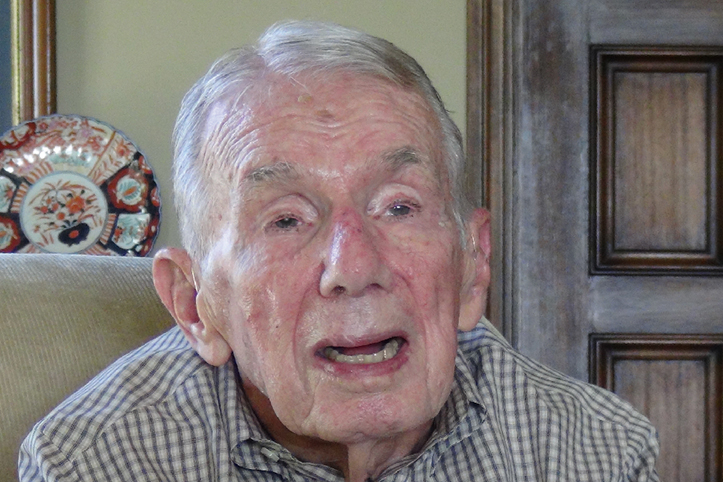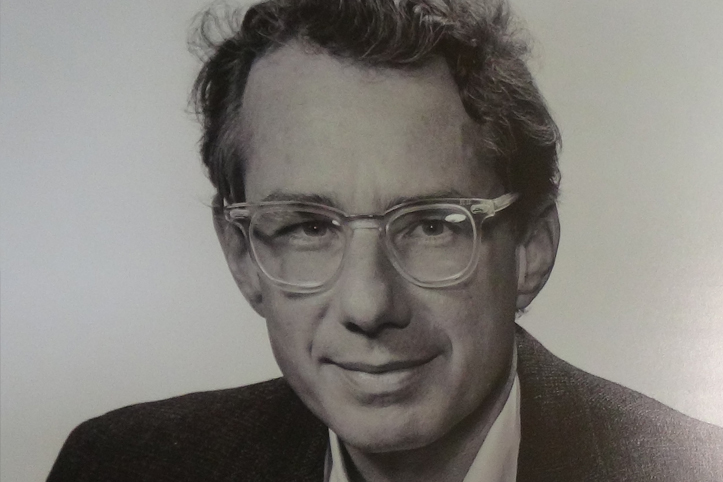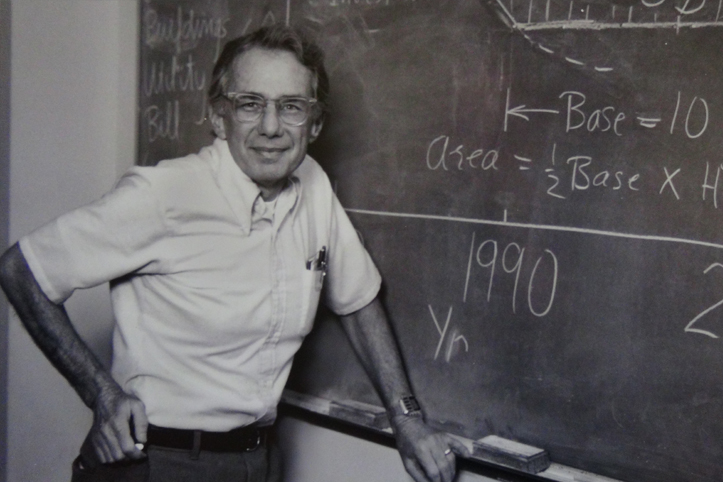There are many facets to the sustainable development challenge, and energy is arguably the most pivotal of them all. There are many who have contributed greatly on energy, but Arthur H. Rosenfeld is arguably the most extraordinary of them all.
Nobel Laureate Dr. Steven Chu has written, for instance, that “it is no exaggeration to say that the work Art pioneered is now indispensable in how the world transitions to a sustainable future… his work has had profound national and international impact.”
Among those who know him, Professor Rosenfeld goes by “Art”. Among those who revere him and his extraordinary contributions over the past three decades, he goes by a moniker of great prestige: “The Godfather of Energy Efficiency”.
However, his career did not even start in energy. As the last graduate student of the legendary scientist and Nobel Laureate Enrico Fermi, Prof. Rosenfeld first became a renowned scientist in experimental particle physics.
But then came the 70s Oil Crises, as well as a rising awareness of global warming and climate change, and it became clear to him that energy was the central problem not just for the United States, but for the sustainable future of humanity as a whole. And so Prof. Rosenfeld made a dramatic shift of focus towards energy, which would lead to a myriad of groundbreaking innovations in energy technology and policy.
Since most experts agreed that energy efficiency and conservation would be the most effective CO2 emission-cutting tool for the next few decades, that was where Prof. Rosenfeld applied his enormous intellectual and scientific abilities. He also focused in particular on our built environment. According to the United Nations Environment Programme, buildings account for around 40% of global energy consumption and 30% of global greenhouse gas emissions.For the United States these numbers are even higher.
Prof. Rosenfeld began by creating what would become the Center for Building Science at the Lawrence Berkeley National Laboratory (LBNL). Under his leadership the Center developed high-frequency electronic ballasts that made possible compact fluorescent lighting (CFL), which used ¼ the energy of incandescent lighting and lasted over ten times longer. The Center also innovated low-emissivity “Smart Windows”, which let in light but block out heat and thus make buildings warmer in the winter but cooler in the summer, while using much less energy.
Prof. Rosenfeld did not just break new grounds with technology, he did so with policies as well. In the 1970s, California faced a looming shortfall in electricity generation, and many were clamoring for more coal-fired power plants. But Prof. Rosenfeld knew that improved energy efficiency could meet the growing demand, and with his formidable persuasive power he convinced Governor Jerry Brown and others to pass landmark efficiency standards for appliances such as refrigerators, freezers and air-conditioners. As a result, for instance, the power requirement of refrigerators dropped by a factor of four over 25 years.
Prof. Rosenfeld also led the development of software in the energy efficiency analysis and design for buildings. Since 1978, this effort has resulted in DOE-1 and DOE-2 series, the latter of which has become Energy Plus which has since been widely adopted in California, US and other countries in the world. This contributes immensely to energy saving in buildings.
In the 1990s he would continue the fight for energy efficiency in public office, first as Senior Advisor to the U.S. Energy Department’s Assistant Secretary for Energy Efficiency and Renewable Energy (1994-1999), then as California’s Energy Commissioner (2000-2010). He would help pass the first efficiency standards for televisions as well as the so-called “energy vampires” – electronic appliances that consume power even when in stand-by mode.
The impact of these technology and policy innovations have been profound:
A 2001 US National Academy of Sciences study showed that Prof. Rosenfeld’s initiatives and innovations have saved $30 billion. It also estimated that by 2030 such energy standards will have saved a total of $1.8 trillion and 7 billion tons of CO2 emissions – which equals the annual emissions of 1.5 billion cars.
While U.S. per-capita electricity use has grown by 40% since the 70s, California’s per-capita electricity use has stayed flat. The energy efficiency community calls this “The Rosenfeld Effect”.
Prof. Rosenfeld’s research into energy efficiency and the resulting policy standards have led to worldwide adoption of similar standards, notably in China and India.
Even after retiring from public service, Prof. Rosenfeld continues to save both energy and carbon emissions for the world. He began promoting “white roofs” and “white pavements”, estimating that retrofitting all urban roofs and pavements with materials that reflect (rather than absorb) sunlight would be equal to eliminating the carbon emissions from all the world’s cars – for 11 years.
In 2013, President Barack Obama personally presented Prof. Rosenfeld with the National Medal of Technology and Innovation, “for extraordinary leadership in the development of energy-efficient building technologies and related standards and policies.”
In 2010, 52 leading scientists in energy efficiency proposed a new unit of energy – “The Rosenfeld” – equal to 3 billion kilowatt-hours per year of electricity savings.
Prof. Rosenfeld’s peers speak of his impact in the most glowing of terms, here is but a sample:
Paul Alivisatos, Director of LBNL: "Art's long-standing efforts in the field of energy efficiency have truly changed the way we think about energy today.”
Robert Sawyer, UC-Berkeley Professor: “Prof. Rosenfeld is responsible for the saving of more energy and reducing of more carbon dioxide emissions than any individual.”
Steven Chu, Nobel Laureate: “he has inspired over two generations of researchers in the field of energy efficiency; I include myself among those inspired.”
The Tang Prize in Sustainable Development recognizes those who have made extraordinary contributions to the sustainable development of human societies, especially through groundbreaking innovations in science and technology.
“Extraordinary” and “groundbreaking” are indeed fitting words to describe Prof. Rosenfeld’s three decades of scientific breakthroughs, technology innovations and policy advancements to reduce humanity’s energy use and carbon emissions.
Arthur H. Rosenfeld is most deserving of the 2016 Tang Prize in Sustainable Development.



